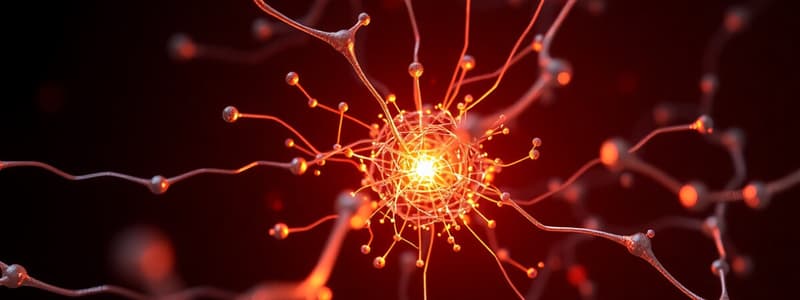Podcast
Questions and Answers
What trend does electronegativity follow across a period?
What trend does electronegativity follow across a period?
- It decreases from right to left.
- It increases from left to right. (correct)
- It stays constant across a period.
- It decreases from top to bottom.
In which direction does electronegativity increase within a group?
In which direction does electronegativity increase within a group?
- It does not exhibit a clear direction.
- From top to bottom.
- From left to right.
- From bottom to top. (correct)
What is the role of low-lying f orbitals in relation to the elements?
What is the role of low-lying f orbitals in relation to the elements?
- They form elements with a lower electronegativity.
- They contribute to the formation of noble gases.
- They are filled before any s or p orbitals are occupied.
- They are formed by the filling of very low-lying f orbitals. (correct)
Which group of elements typically does not follow the electronegativity trend observed in other groups?
Which group of elements typically does not follow the electronegativity trend observed in other groups?
Which statement correctly describes electronegativity?
Which statement correctly describes electronegativity?
What is the primary reason that two electrons cannot occupy the same orbital with the same spin?
What is the primary reason that two electrons cannot occupy the same orbital with the same spin?
How is the magnetic moment of an electron characterized?
How is the magnetic moment of an electron characterized?
In a given orbital, if one electron has a spin of +1/2, what must the spin of the other electron be?
In a given orbital, if one electron has a spin of +1/2, what must the spin of the other electron be?
What must be true for two electrons occupying the same orbital?
What must be true for two electrons occupying the same orbital?
If two electrons are represented as (m s) in terms of magnetic moment, what implications does the value of -1/2 have?
If two electrons are represented as (m s) in terms of magnetic moment, what implications does the value of -1/2 have?
Flashcards are hidden until you start studying
Study Notes
Magnetic Moment
- The magnetic moment (m s) is directionally oriented with a spin of +1/2 or -1/2.
- If two electrons occupy the same orbital, they must have opposing spins.
- Elements formed by filling low-lying f orbitals have this property.
Electronegativity
- Represents an element's affinity for its electrons and ability to gain additional electrons.
- Increases from left to right across a period and from bottom to top in a group (excluding group VIIIA).
- This increase is due to the shielding effect of inner electrons diminishing the nucleus' attractive force on valence electrons.
Types of Bonding Interactions
- Ionic Bonding: Electrostatic force between oppositely charged entities (cations and anions).
- Cations are less electronegative and lose valence electrons.
- Anions are more electronegative and gain valence electrons.
- Ionic bonding can also occur between unlike molecules, playing a role in solution formation.
- Hydrogen Bonding: Important in interactions between complex molecules and secondary protein structures.
Studying That Suits You
Use AI to generate personalized quizzes and flashcards to suit your learning preferences.



